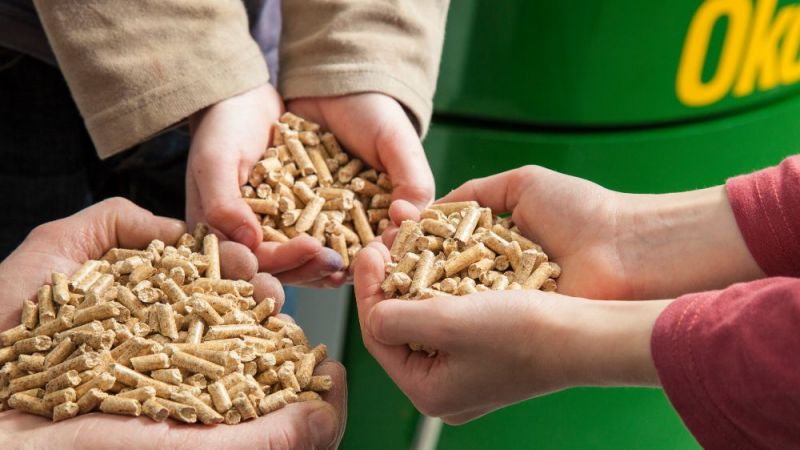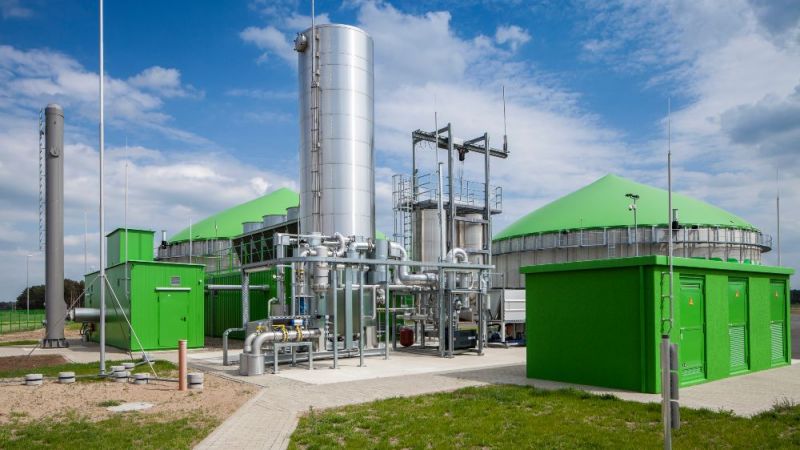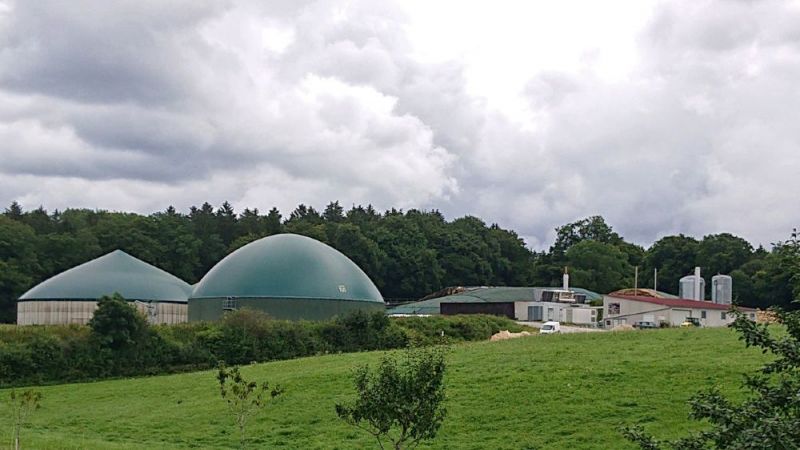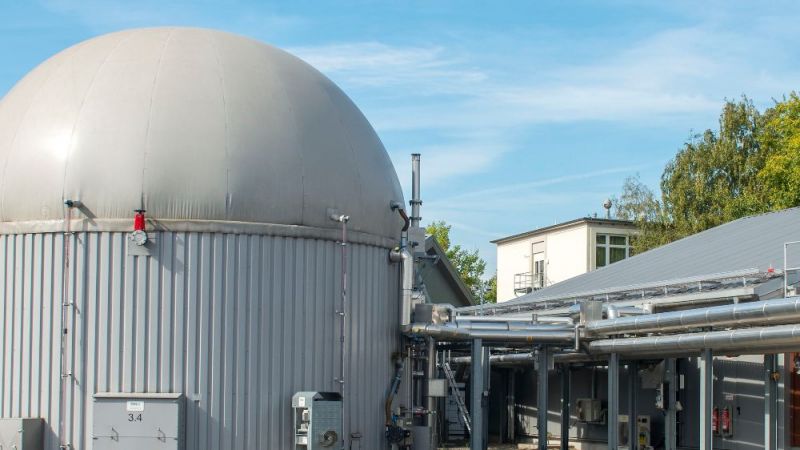Bioenergy
Flexible power production through bioenergy plants
Generating power with bioenergy plants: By operating the plants in a way that is determined by the electricity requirement, this can be achieved in a demand-based, cost-efficient and climate-friendly manner.
Bioenergy has a decisive advantage over other renewable energy sources such as wind or solar energy: It is independent of weather-related influences and can be generated at precisely the moment when power is needed. To achieve this, the plants must be able to decouple the production of biogas from the actual production of power in terms of time. This is done, for example, by adding gas or thermal storage systems and additional capacities of CHP plants to generate power. With the flexibility premium introduced in 2012 and the flexibility surcharge of the German Renewable Energy Sources Act introduced in 2014, the German government is promoting the necessary technical investments. Nevertheless, power production through bioenergy plants remains largely inflexible.
New incentive system supports flexible operation of biogas plants
The power production of bioenergy plants is to be geared more towards the respective current demand. The scientists in the "Flexsignal" research project therefore aim to develop new concepts that create an incentive for operators to provide power from biomass flexibly and at short notice. To do this, they first analysed data on electricity prices from the European Power Exchange (EPEX) in Paris from 2016 to 2018. The spot markets for energy, EPEX Spot, are used to trade electricity volumes that can be delivered at short notice.
Based on the data analyses, they have developed a bonus/malus system that specifically reinforces the prices on the spot markets. Spot market prices contain a lot of relevant and up-to-date information on generation and consumption and therefore reflect the respective demand situation well. The six hours of the day with the highest prices are assigned a bonus and the six hours of the day with the lowest prices are assigned a malus. This creates an incentive to produce the annually determined producible amount of power precisely when demand is particularly high. Project coordinator Michael Steubing, Helmholtz Centre for Environmental Research (UFZ), explains the results: "The results of the modelling show that a flexible operation of the biogas plants generates additional revenue compared to a biogas plant that continuously feeds in power. The concepts significantly increase this incentive. Overall, the concept developed provides the desired incentive effect to produce power during the high-priced hours."
Flexible power production influences the European market
In further studies, the scientists investigated the question of how flexible power production by biomass plants affects the German and European power and heating system. In the process, the project team was able to show that, compared to inflexible operation, it is possible to reduce both the variable system costs, such as fuel costs for fossil fuel-fired power plants and avoided CO2 costs, and the total emissions (CO2 emissions of the German and European power plant infrastructure). However, the price increase in times of low residual load results in a reduction of exports, which slightly increases net imports.
The residual load is the share of the total German electricity requirement that cannot be met by the volatile, fluctuating energy media wind and solar. It is therefore the remaining demand for power, most of which is covered by conventional sources.
On the European Power Exchange (EPEX) in Paris, power quantities that can be delivered at short notice are traded on the so-called spot markets. These are categorised as day-ahead and intraday trading.
In day-ahead trading, hourly and block products are traded for the following day in an auction held daily from Monday to Friday. The pricing is based on the merit order principle. That means: The last power plant required to meet the electricity requirement at a certain point in time determines the electricity price at that point in time. This is then the same for all market participants ("uniform pricing").
In continuous intraday trading, on the other hand, trading can take place around the clock. This means that quarter-hour products can still be bought and sold up to 5 minutes before physical delivery. Here, pricing is done according to the "pay as bid principle". Each product has an individual price. In intraday trading, a traded megawatt-hour of power can have many different prices at the same time.









